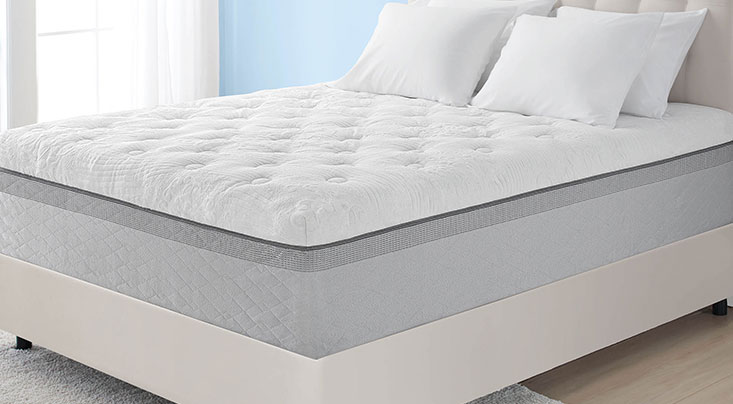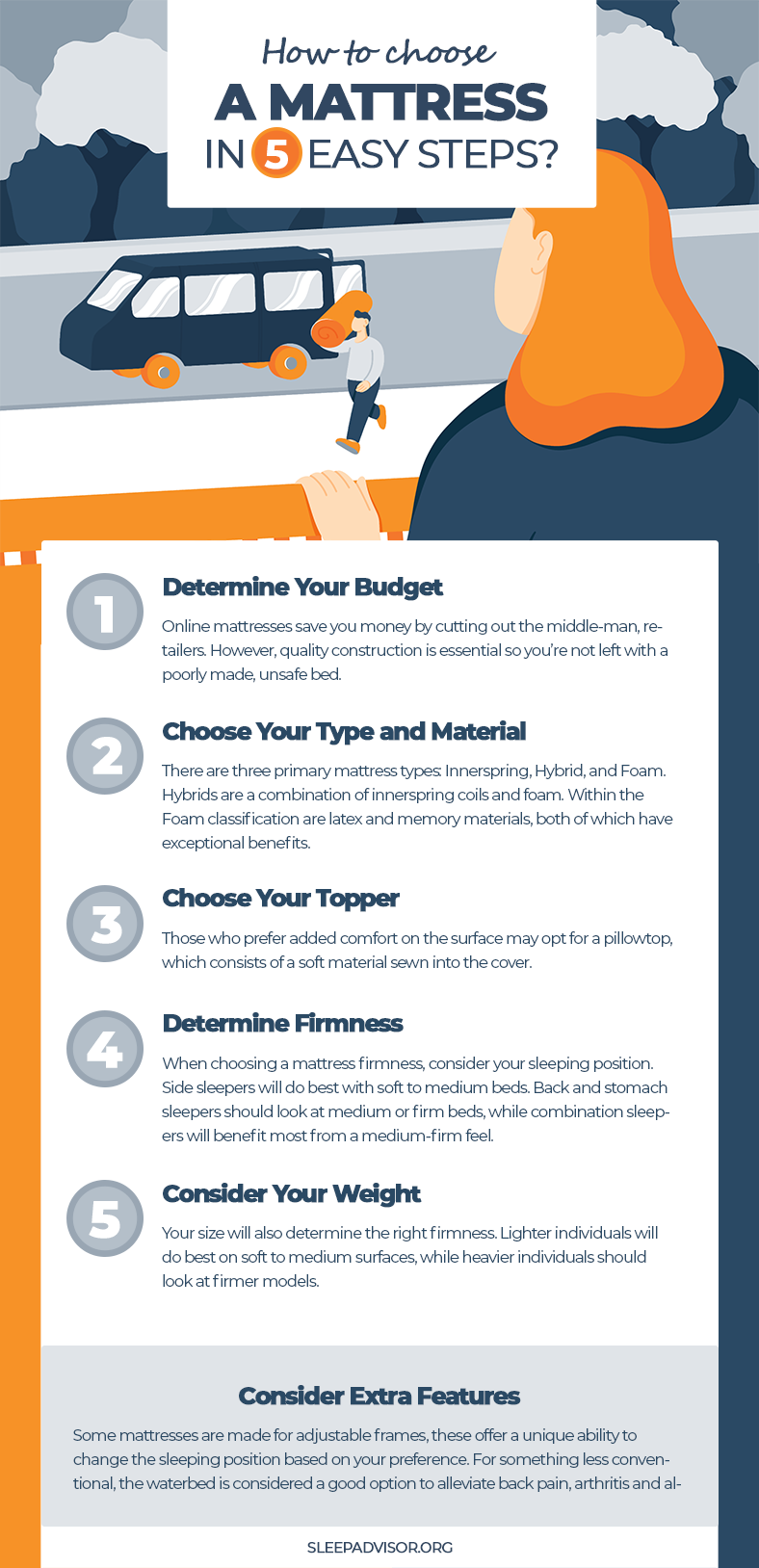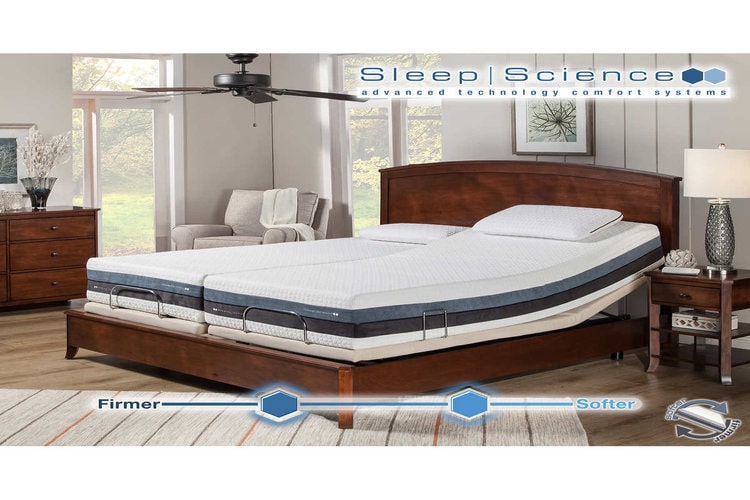Foam Mattress: Can You Sleep on Just a Foam Mattress?
Foam mattresses have become increasingly popular in recent years, touted for their comfort and support. But can you really get a good night's sleep on just a foam mattress? The answer is yes, but there are a few things to consider before making the switch.
The Pros and Cons of Sleeping on a Foam Mattress
Like any mattress, there are pros and cons to sleeping on a foam mattress. The main advantage is the level of comfort and support it provides. Foam mattresses are known for contouring to your body, providing pressure relief for aches and pains. They also tend to be more durable than traditional spring mattresses, lasting up to 10 years.
However, foam mattresses can be on the pricier side and may retain heat, making them uncomfortable for hot sleepers. They also have a distinct sinking feeling, which some people may not enjoy. It's important to weigh these factors before deciding if a foam mattress is right for you.
How to Get a Good Night's Sleep on a Foam Mattress
To ensure you get the most out of your foam mattress, there are a few things you can do to improve your sleep quality. Start by choosing the right firmness level for your body and sleep preferences. A firmer foam mattress may be better for back and stomach sleepers, while a softer one may be more suitable for side sleepers.
Investing in a good quality mattress topper can also help regulate temperature and provide extra cushioning if needed. Additionally, make sure to keep your mattress clean and rotate it regularly to maintain its shape and support.
The Benefits of Sleeping on a Foam Mattress
Aside from the comfort and support, there are several other benefits to sleeping on a foam mattress. Due to its ability to conform to your body, it can help alleviate pressure points and reduce pain. This can be especially beneficial for those with chronic pain or injuries.
Foam mattresses also tend to have better motion isolation, meaning you won't feel your partner tossing and turning throughout the night. This can lead to a more restful sleep for both parties. Additionally, foam mattresses are hypoallergenic and resistant to dust mites, making them a good option for those with allergies.
Tips for Choosing the Right Foam Mattress for Your Sleep Needs
When shopping for a foam mattress, it's important to consider your individual sleep needs. This includes your preferred sleep position, any chronic pain or injuries, and your body weight. A firmer mattress may be better for heavier individuals, while a softer one may be more suitable for lighter individuals.
It's also important to consider the density and type of foam used in the mattress. Higher density foam tends to be more durable and supportive, while lower density foam may be more affordable but may not last as long. Memory foam and latex foam are two popular options, each with their own benefits and drawbacks.
The Science Behind Sleeping on a Foam Mattress
The unique construction of foam mattresses is what sets them apart from traditional spring mattresses. Foam mattresses are made of a combination of materials, including polyurethane foam, memory foam, and latex foam. These materials work together to provide contouring support and pressure relief.
Studies have shown that sleeping on a foam mattress can improve sleep quality and reduce pain. The foam conforms to the natural curves of the body, promoting proper spinal alignment and reducing pressure on muscles and joints. This can lead to a more comfortable and restful night's sleep.
How to Care for Your Foam Mattress for Optimal Sleep
To get the most out of your foam mattress, it's important to properly care for it. This includes rotating the mattress every 3-6 months to prevent uneven wear and maintaining a clean sleeping environment. In case of spills or stains, spot clean the affected area instead of saturating the mattress with water.
It's also recommended to use a breathable mattress protector to protect against spills and stains while still allowing air to circulate. Avoid using harsh chemicals on your mattress, as it can damage the foam and affect its performance.
The Best Sleeping Positions for a Foam Mattress
Foam mattresses can accommodate all sleeping positions, but certain positions may provide better support and comfort. Back sleepers may benefit from a medium-firm foam mattress, while side sleepers may prefer a softer mattress for better pressure relief on the shoulders and hips.
Stomach sleepers may need a firmer mattress to keep their spine properly aligned, as a soft mattress may cause their midsection to sink too much. Ultimately, the best sleeping position on a foam mattress will depend on your individual preferences and needs.
How to Transition to Sleeping on a Foam Mattress
If you're used to sleeping on a traditional spring mattress, it may take some time to adjust to a foam mattress. Give yourself a few weeks to get used to the new feel and support. You may also want to gradually transition by starting with a foam mattress topper before investing in a full foam mattress.
It's also important to choose the right pillow to complement your foam mattress. A pillow that is too high or too low can affect the alignment of your spine and lead to discomfort. Experiment with different pillow heights to find the best fit for your new foam mattress.
The Top Foam Mattress Brands for a Comfortable Night's Sleep
When it comes to foam mattresses, there are many brands to choose from. Some of the top brands known for their quality and comfort include Casper, Purple, Tempur-Pedic, and Nectar. These brands offer a range of foam mattresses to suit different sleep preferences and budgets.
Do your research and read reviews before purchasing a foam mattress to ensure you're getting the best option for your needs. Remember, the most expensive mattress may not always be the best one for you.
The Comfort and Durability of a Foam Mattress for a Good Night's Sleep

The Importance of Quality Sleep
 Quality sleep is essential for our overall health and well-being. It allows our body and mind to rest and recharge, helping us to be more productive and focused during the day. However, for some people, getting a good night's sleep can be a challenge. This is where the type of mattress we sleep on plays a crucial role. While traditional spring mattresses have been the go-to choice for many years, foam mattresses are gaining popularity for their comfort and durability. But the question remains,
can you sleep on just a foam mattress?
Quality sleep is essential for our overall health and well-being. It allows our body and mind to rest and recharge, helping us to be more productive and focused during the day. However, for some people, getting a good night's sleep can be a challenge. This is where the type of mattress we sleep on plays a crucial role. While traditional spring mattresses have been the go-to choice for many years, foam mattresses are gaining popularity for their comfort and durability. But the question remains,
can you sleep on just a foam mattress?
Understanding Foam Mattresses
 Foam mattresses are made from
high-density polyurethane foam
, which is known for its supportive and contouring properties. This type of foam has an open-cell structure, allowing air to flow through and regulate temperature, keeping you cool and comfortable throughout the night. Unlike traditional spring mattresses, foam mattresses
do not transfer motion
, making them an ideal choice for couples and light sleepers.
Foam mattresses are made from
high-density polyurethane foam
, which is known for its supportive and contouring properties. This type of foam has an open-cell structure, allowing air to flow through and regulate temperature, keeping you cool and comfortable throughout the night. Unlike traditional spring mattresses, foam mattresses
do not transfer motion
, making them an ideal choice for couples and light sleepers.
The Benefits of Sleeping on a Foam Mattress
 One of the main benefits of sleeping on a foam mattress is the
pressure relief
it provides. The foam molds to your body, distributing your weight evenly and reducing pressure points on your joints, leading to a more comfortable and restful sleep. This is especially beneficial for those with chronic pain or injuries. Foam mattresses are also
hypoallergenic
and
resistant to dust mites
, making them a great choice for allergy sufferers.
One of the main benefits of sleeping on a foam mattress is the
pressure relief
it provides. The foam molds to your body, distributing your weight evenly and reducing pressure points on your joints, leading to a more comfortable and restful sleep. This is especially beneficial for those with chronic pain or injuries. Foam mattresses are also
hypoallergenic
and
resistant to dust mites
, making them a great choice for allergy sufferers.
The Durability Factor
 A common concern when it comes to foam mattresses is their durability. However, with advancements in technology, foam mattresses now offer
long-lasting support and comfort
. High-density foam mattresses can last up to 10 years, making them a worthwhile investment. They are also less prone to sagging and wear and tear compared to traditional spring mattresses.
A common concern when it comes to foam mattresses is their durability. However, with advancements in technology, foam mattresses now offer
long-lasting support and comfort
. High-density foam mattresses can last up to 10 years, making them a worthwhile investment. They are also less prone to sagging and wear and tear compared to traditional spring mattresses.
Customization and Affordability
 Another advantage of foam mattresses is that they can be
customized
to fit your specific needs and preferences. Some foam mattresses come with adjustable layers, allowing you to switch between soft, medium, and firm support depending on your comfort level. Additionally, foam mattresses are
more affordable
compared to traditional spring mattresses, making them a budget-friendly option without compromising on comfort and quality.
Another advantage of foam mattresses is that they can be
customized
to fit your specific needs and preferences. Some foam mattresses come with adjustable layers, allowing you to switch between soft, medium, and firm support depending on your comfort level. Additionally, foam mattresses are
more affordable
compared to traditional spring mattresses, making them a budget-friendly option without compromising on comfort and quality.
Conclusion
 In conclusion, the answer to the question,
can you sleep on just a foam mattress?
is a resounding yes. With their comfort, durability, and customization options, foam mattresses are an excellent choice for a good night's sleep. If you are in the market for a new mattress, consider investing in a high-quality foam mattress for a comfortable and restful sleep experience.
In conclusion, the answer to the question,
can you sleep on just a foam mattress?
is a resounding yes. With their comfort, durability, and customization options, foam mattresses are an excellent choice for a good night's sleep. If you are in the market for a new mattress, consider investing in a high-quality foam mattress for a comfortable and restful sleep experience.














































































:max_bytes(150000):strip_icc()/SleeponLatex-b287d38f89374e4685ab0522b2fe1929.jpeg)







































